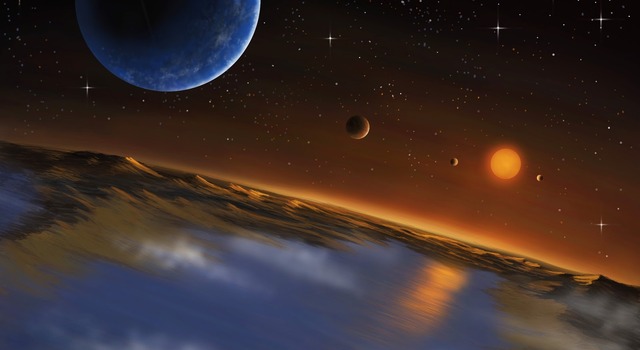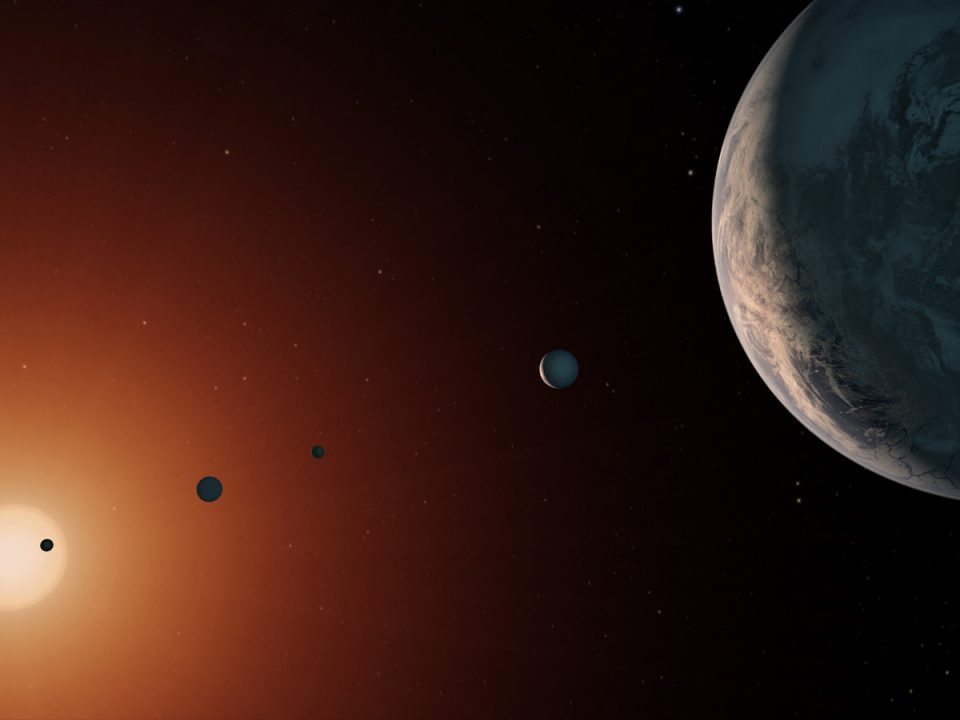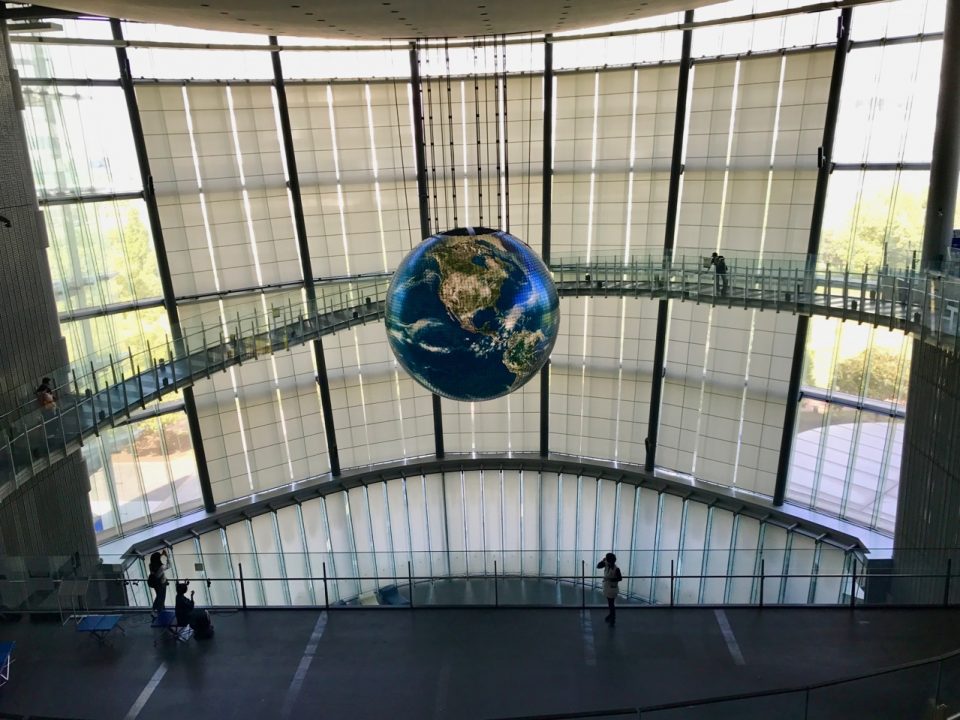AGU 2015 session: Direct Imaging of Habitable Exoplanets: Progress and Future
Thoughts on GPI
October 29, 2015
How to explain the inconceivable
January 10, 2016Join us tomorrow at the AGU Fall Meeting for a session on direct imaging of habitable exoplanets that I organized with my colleagues Ramses Ramirez from Cornell University and David Black.
This session consists in a discussion on the potential of new and future facilities and modeling efforts designed to detect, image and characterize habitable exoplanets, studying their formation, evolution and also the existence of possible biospheres. Topics to be covered in this session include signs of exoplanet habitability and global biosignatures that can be sought with upcoming instrumentation; instrument requirements and technologies to detect these markers; strategies for target selection and prioritization; and impacts of planetary system properties, ground-based and space telescope architectures, and impacts of instrument capabilities on the yield of potentially inhabited exoplanets.
We have an oral session with 5 talks including two invited talks and a poster session 7 abstracts. Below a list.
We look forward to seeing you at the session this morning and this afternoon.
P32B: Direct Imaging of Habitable Exoplanets: Progress and Future I
Wednesday, 16 December 2015 11:20am – 12:20pm Moscone West – 2012
11:20 Characterizing Pale Blue Dots Around FGKM Stars
Sarah Rugheimer, University of St. Andrews, St. Andrews, United Kingdom; Simons Foundation, Collaboration on the Origins of Life, New York, NY, United States, Lisa Kaltenegger, Cornell University, Ithaca, NY, United States, Dimitar D. Sasselov, Harvard University, Astronomy, Cambridge, MA, United States and Antigona Segura, Universidad Nacional Autonoma de Mexico, Instituto de Ciencias Nucleares, Mexico City, Mexico
11:32 Why Alpha Centauri is a Particularly Good Target for Direct Imaging of Exoplanets.
Ruslan Belikov1, Eduardo Bendek1, Sandrine Thomas2, Jared Males3 and ACESat proposal team, (1)NASA Ames Research Center, Moffett Field, CA, United States, (2)LSST, Tucson, United States, (3)University of Arizona, Tucson, AZ, United States
11:44 Mapping the Region in the Nearest Star System to Search for Habitable Planets
Jack J Lissauer and Billy Quarles, NASA Ames Research Center, Moffett Field, CA, United States
11:56 Characterizing Exoplanets with 2-meter Class Space-based Coronagraphs
Tyler D Robinson, University of California Santa Cruz, Astronomy and Astrophysics, Santa Cruz, CA, United States, Mark S Marley, NASA Ames Research Center, Moffett Field, CA, United States and Karl R Stapelfeldt, NASA Goddard Space Flight Center, Greenbelt, MD, United States
12:08 Global Surface Photosynthetic Biosignatures Prior to the Rise of Oxygen
Mary Nichole Parenteau, SETI Institute Mountain View, Mountain View, CA, United States, Nancy Y Kiang, NASA Goddard Institute for Space Studies, New York, NY, United States, Robert E. Blankenship, Washington University in St Louis, Departments of Biology and Chemistry, St. Louis, MO, United States, Esther Sanromá, Instituto de Astrofísica de Canarias, Tenerife, Spain, Enric Palle Bago, Universidad de La Laguna, Departamento de Astrofísica, La Laguna, Spain, Tori M Hoehler, NASA Ames Research Center, Moffett Field, CA, United States, Beverly K. Pierson, University of Puget Sound, Biology Department, Tacoma, WA, United States and Victoria Suzanne Meadows, University of Washington, Seattle, WA, United States
P33B: Direct Imaging of Habitable Exoplanets: Progress and Future II Posters
Wednesday, 16 December 2015 13:40 – 18:00
Moscone South – Poster Hall
Correlated PSF Subtraction Using an Archive
Benjamin Gerard1 and Marois Christian1,2, (1)University of Victoria, Victoria, BC, Canada, (2)National Research Council, Herzberg, Victoria, BC, Canada
Light curves, Spherical and Bond albedos of Jupiter, Saturn, and exoplanets.
Ulyana Dyudina, Caltech, Pasadena, CA, United States
Surface Temperatures of Exoplanets
Marie Weisfeiler1, Donald L Turcotte1 and Louise H Kellogg2, (1)University of California Davis, Davis, CA, United States, (2)University of California – Davis, Davis, CA, United States
A Statistical Model for Determining the Probability of Observing Exoplanetary Radio Emissions
Rodolfo Garcia1, Mary Knapp1, Daniel Winterhalter2 and Walid Majid3, (1)Massachusetts Institute of Technology, Cambridge, MA, United States, (2)NASA Jet Propulsion Laboratory, Pasadena, CA, United States, (3)Jet Propulsion Laboratory, Pasadena, CA, United States
Constraining Methane Abundance and Cloud Properties from the Reflected Light Spectra of Directly Imaged Exoplanets
Roxana Lupu, Bay Area Environmental Research Institute Moffett Field, Moffett Field, CA, United States, Mark S Marley, NASA Ames Research Center, Moffett Field, CA, United States and Nikole K Lewis, Massachusetts Inst of Tech, Cambridge, MA, United States
Systematic Search of the Nearest Stars for Exoplanetary Radio Emission: Preliminary Results from LOFAR
Daniel Winterhalter, NASA Jet Propulsion Laboratory, Pasadena, CA, United States and Mary Knapp, Massachusetts Institute of Technology, Cambridge, MA, United States
A Space Mission Concept to Directly Image the Habitable Zone of Alpha Centauri
Eduardo Bendek1, Ruslan Belikov1, Jared Males2, Sandrine Thomas1 and Julien Lozi3, (1)NASA Ames Research Center, Moffett Field, CA, United States, (2)University of Arizona, Tucson, AZ, United States, (3)NAOJ National Astronomical Observatory of Japan, Subaru Telescope, hilo, HI, United States
Addendum:
A few pictures taken during and after the session.

The attendees of the session. It was obviously a successful session despite the competition (Al Gore was talking at the same time in a nearby room)




